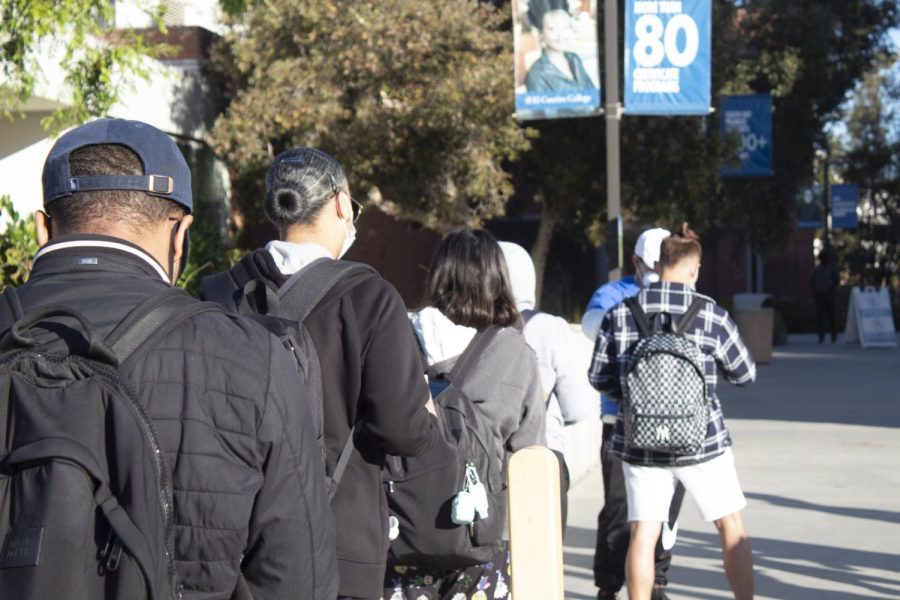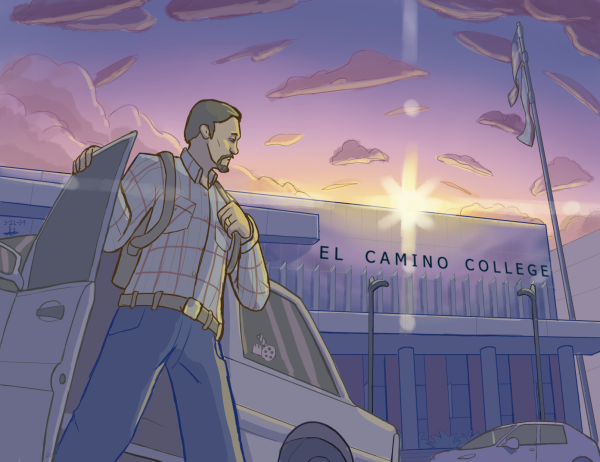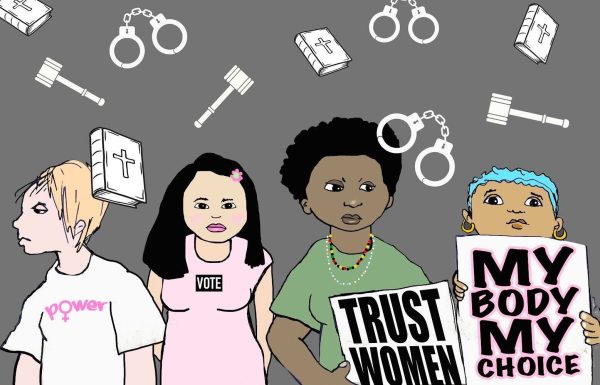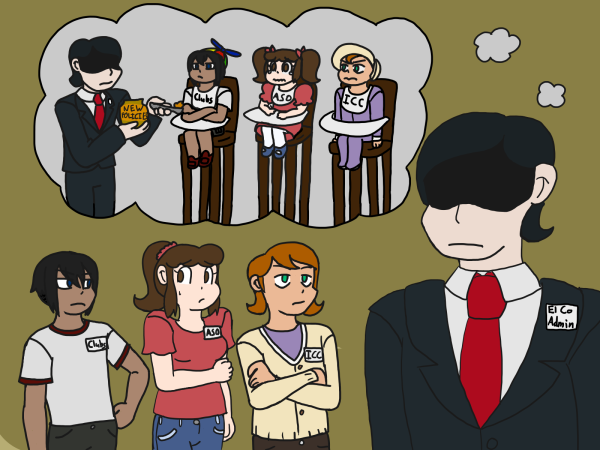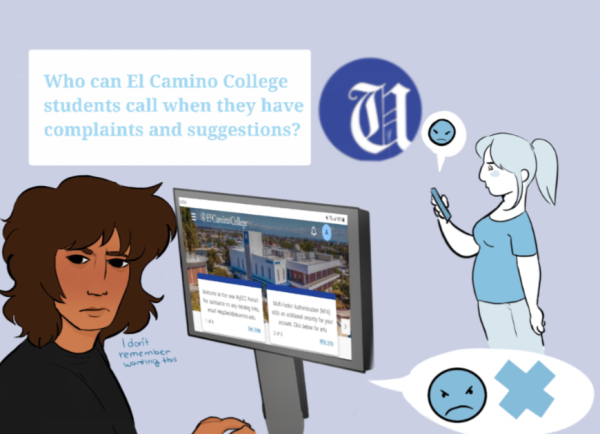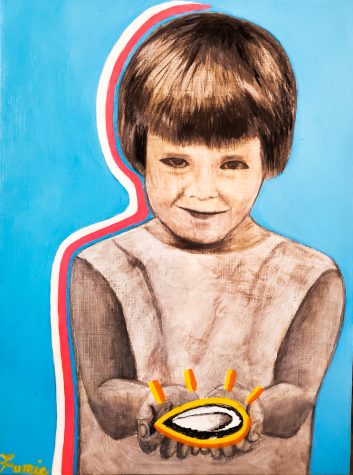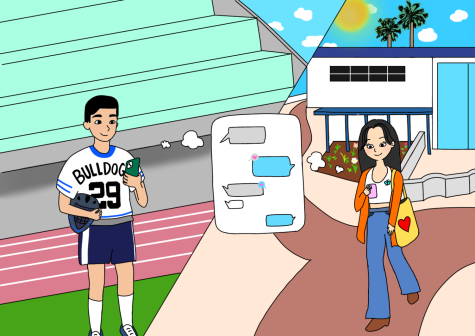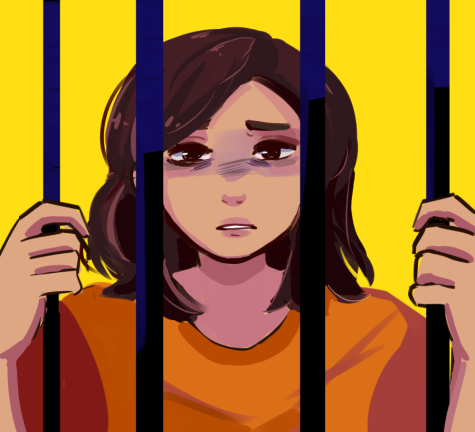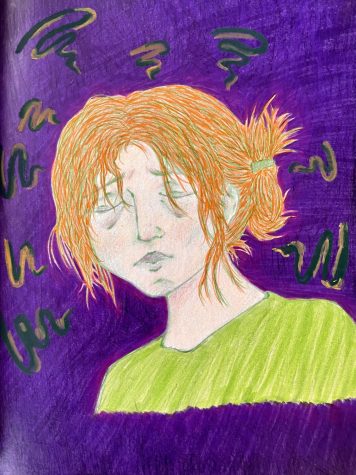I thought I had COVID. No one knew what to do, including El Camino.
Students line up grab their wrist bands from a World Back to Work employee in order enter campus near the Math Business Allied Health building at El Camino College on Tuesday, March 1. Students first must complete an online questionnaire about possible exposure to COVID-19 in order to get a QR for access to the wrist band. (Vitor Fernandez | The Union)
Coughing, sneezing, runny nose, headaches, and fevers. Those were my symptoms for almost two weeks.
I was certain I had contracted the coronavirus, except I tested negative three times. I was told not to come to campus. A week later, I’m still catching up on everything I missed.
With cold weather lingering from the winter, I cannot be the only student who has gotten sick with your standard cold. I cannot also be the only student confused about how to navigate my school’s COVID-19 protocols, considering the return to in-person classes this spring semester.
In February, I was experiencing cold-like symptoms and immediately attempted to book a COVID test using El Camino College’s World Back to Work website, however, I was met with a message stating that there was no available testing for up to two days.
After learning that COVID tests were unavailable at El Camino, I drove around Torrance all morning trying to find a testing site. My three negative results eventually came from an at-home test, a rapid test and a PCR that came back a few days later.
I messaged my professors the results I received and they each told me not to attend class due to one of El Camino’s protocols listed in their Campus Reopening Safety Plan that was last updated January 11.
The protocol states that “students, faculty and staff must not report to campus if they are not feeling well or are exhibiting symptoms of COVID-19 and should not return to campus until the criteria to discontinue home isolation are met.”
By this point, I missed a full week of classes and was quickly overwhelmed by the amount of work that I had to make up. As a journalism student, I missed a national conference that I was supposed to attend.

I missed opportunities to find sources and interview them around campus as my deadlines were fast approaching. I missed quizzes and today I’m scrambling to teach myself subject matter.
Where does this leave students that are in my position?
What are students supposed to do if the only answer they’re given is an emphasis that “El Camino College discourages any person from attending school or performing work while they are sick,” even with proof of negative testing?
In the middle of a pandemic, anyone should stay home if they’re sick. But what is the protocol for a student in a gray area with a handful of negative results and declining symptoms?
How are they supposed to know what to do? What are the right protocols if the rules haven’t been updated since January?
The issue isn’t solely short answers for sick students, it’s also the lack of screening and temperature checks.
The World Back to Work daily screening kiosks only asks vaccinated community members if they have any potential symptoms or possible exposure to COVID-19 since last on campus.
According to the CDC, coronavirus symptoms do not appear until two days or more after exposure and many people do not even know if they have been exposed in two days.
Screenings should be more thorough, and El Camino College should think about making testing more available for those trying to schedule them.
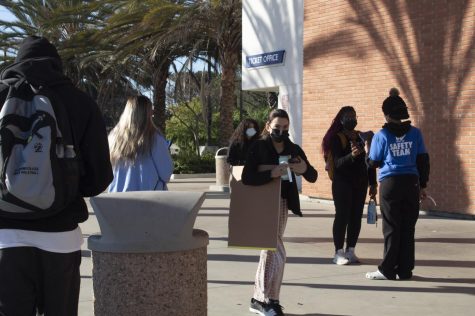
The school has also promised daily temperature checks in their Reopening Safety Plan, but they have since withdrawn the requirement to test only a week before the spring semester began.
I cannot help but wonder, if the protocols and screening were more accurate, would I have been cleared to come back onto campus sooner?
The same could be said about students testing positive with COVID-19. They could’ve been detected more quickly if screenings were as accurate as they originally planned them to be.
At this point, the question is not what El Camino is doing, but what they are not doing to promote the safety and success of their students.
Santa Monica College’s COVID protocol was last updated on March 2 with a list of such updates and on and off-campus COVID-19 case numbers. Cal State Dominguez Hills lays out a COVID-19 reporting diagram for their students. Cal State Long Beach describes their testing mandate clearly with no questions to be asked, providing students with locations, dates and times for such testing.
El Camino College has published COVID-19 protocol updates to their website, but many are scattered and barren with detail.
The latest update, as of March 18, is that the COVID-19 Task Force voted to keep the indoor mask mandate on campus.
It’s time for El Camino to clean up their protocols and mandates.


